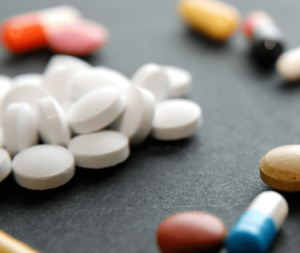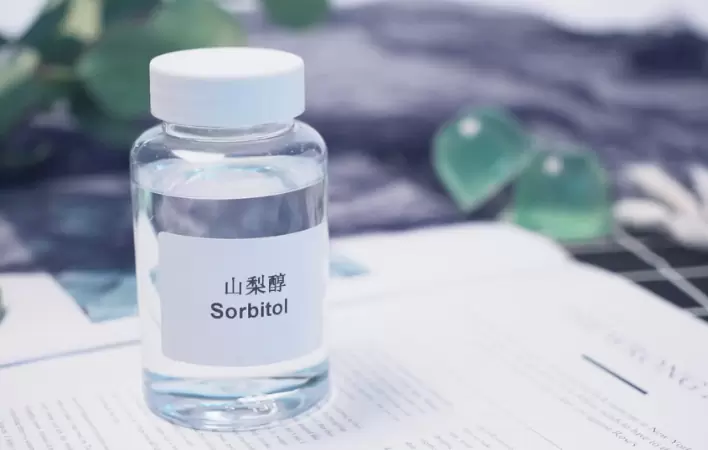Sorbitol , less commonly known as glucitol , is a sugar alcohol with a sweet taste which the human body metabolizes slowly. It can be obtained by reduction of glucose, which changes the converted aldehyde group (−CHO) to a primary alcohol group (−CH2OH). Most sorbitol is made from potato starch, but it is also found in nature, for example in apples, pears, peaches, and prunes. It is converted to fructose by sorbitol-6-phosphate 2-dehydrogenase. Sorbitol is an isomer of mannitol, another sugar alcohol; the two differ only in the orientation of the hydroxyl group on carbon 2. While similar, the two sugar alcohols have very different sources in nature, melting points, and uses.
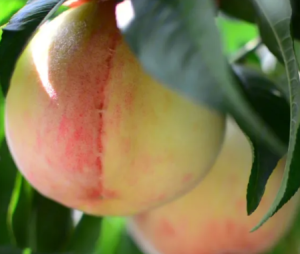
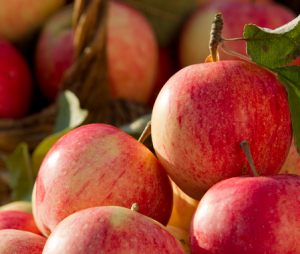
Sorbitol may be synthesised via a glucose reduction reaction[6] in which the converted aldehyde group is converted into a hydroxyl group. The reaction requires NADH and is catalyzed by aldose reductase. Glucose reduction is the first step of the polyol pathway of glucose metabolism, and is implicated in multiple diabetic complications.
The mechanism involves a tyrosine residue in the active site of aldehyde reductase. The hydrogen atom on NADH is transferred to the electrophilic aldehyde carbon atom; electrons on the aldehyde carbon-oxygen double bond are transferred to the oxygen that abstracts the proton on tyrosine side chain to form the hydroxyl group. The role of aldehyde reductase tyrosine phenol group is to serve as a general acid to provide proton to the reduced aldehyde oxygen on glucose.
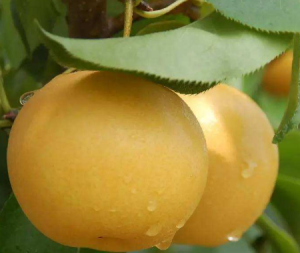

Sweetener
Sorbitol is a sugar substitute, and when used in food it has the INS number and E number 420. Sorbitol is about 60% as sweet as sucrose (table sugar).
Sorbitol is referred to as a nutritive sweetener because it provides dietary energy: 2.6 kilocalories (11 kilojoules) per gram versus the average 4 kilocalories (17 kilojoules) for carbohydrates. It is often used in diet foods (including diet drinks and ice cream), mints, cough syrups, and sugar-free chewing gum. Most bacteria cannot use sorbitol for energy, but it can be slowly fermented in the mouth by Streptococcus mutans, a bacterium that causes tooth decay. In contrast, many other sugar alcohols such as isomalt and xylitol are considered non-acidogenic.
It also occurs naturally in many stone fruits and berries from trees of the genus Sorbus.

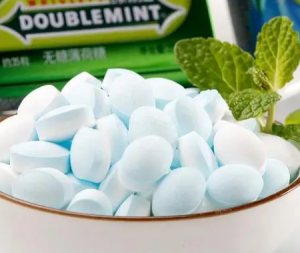
Medical applications
Laxative
As is the case with other sugar alcohols, foods containing sorbitol can cause gastrointestinal distress. Sorbitol can be used as a laxative when taken orally or as an enema.Sorbitol works as a laxative by drawing water into the large intestine, stimulating bowel movements. Sorbitol has been determined safe for use by the elderly, although it is not recommended without the advice of a physician.
Sorbitol is commonly used orally as a one-time dose of 30–150 millilitres (1.1–5.3 imp fl oz; 1.0–5.1 US fl oz) 70% solution.It may also be used as a one-time rectal enema.
Other medical applications
Sorbitol is used in bacterial culture media to distinguish the pathogenic Escherichia coli O157:H7 from most other strains of E. coli, because it is usually unable to ferment sorbitol, unlike 93% of known E. coli strains.
A treatment for hyperkalaemia (elevated blood potassium) uses sorbitol and the ion-exchange resin sodium polystyrene sulfonate (tradename Kayexalate).The resin exchanges sodium ions for potassium ions in the bowel, while sorbitol helps to eliminate it. In 2010, the U.S. FDA issued a warning of increased risk for gastrointestinal necrosis with this combination.
Sorbitol is also used in the manufacture of softgel capsules to store single doses of liquid medicines.
